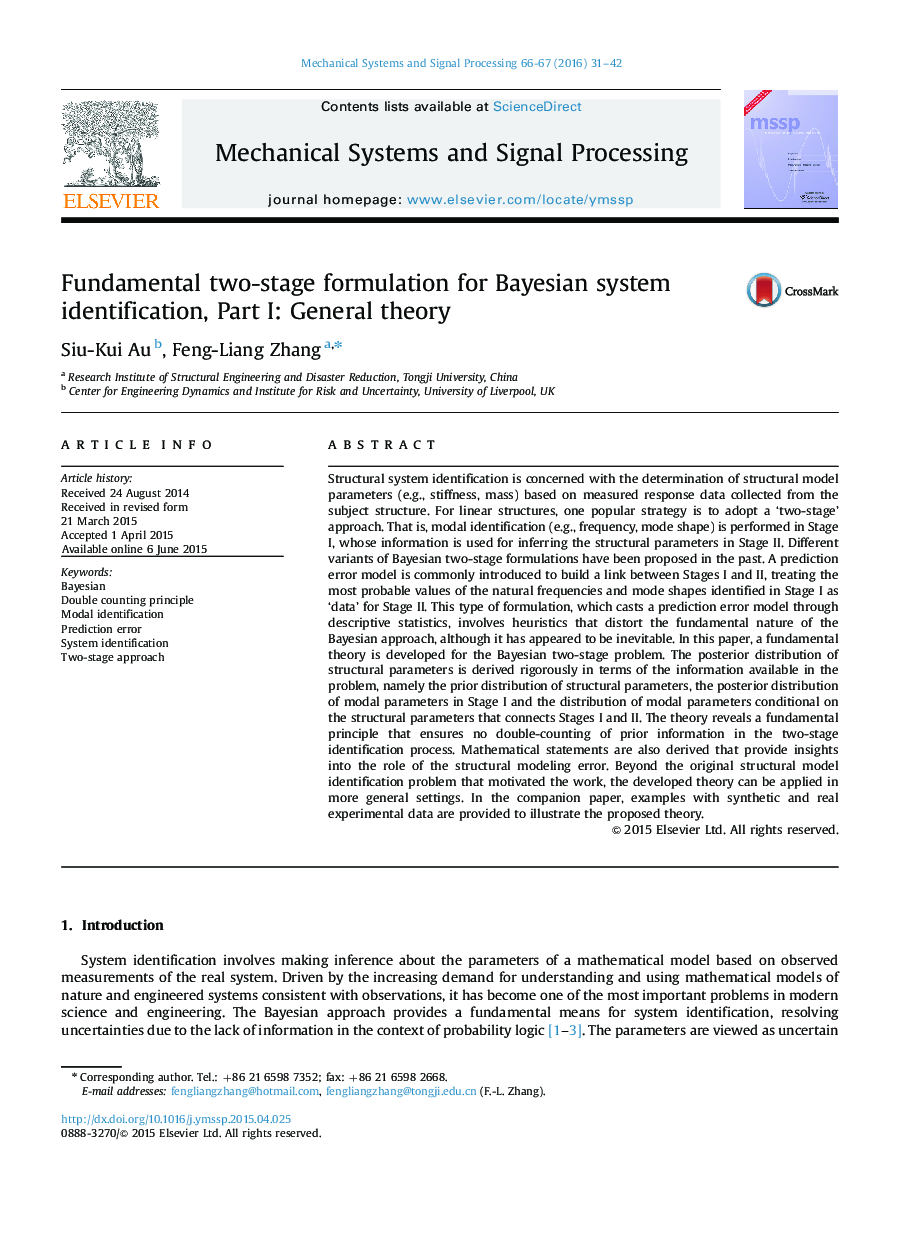| کد مقاله | کد نشریه | سال انتشار | مقاله انگلیسی | نسخه تمام متن |
|---|---|---|---|---|
| 559115 | 1451861 | 2016 | 12 صفحه PDF | دانلود رایگان |
• Fundamental formulation for two-stage Bayesian system identification.
• Resolves heuristic nature of existing formulations.
• Double-counting principle reveals the proper way of processing prior information.
Structural system identification is concerned with the determination of structural model parameters (e.g., stiffness, mass) based on measured response data collected from the subject structure. For linear structures, one popular strategy is to adopt a ‘two-stage’ approach. That is, modal identification (e.g., frequency, mode shape) is performed in Stage I, whose information is used for inferring the structural parameters in Stage II. Different variants of Bayesian two-stage formulations have been proposed in the past. A prediction error model is commonly introduced to build a link between Stages I and II, treating the most probable values of the natural frequencies and mode shapes identified in Stage I as ‘data’ for Stage II. This type of formulation, which casts a prediction error model through descriptive statistics, involves heuristics that distort the fundamental nature of the Bayesian approach, although it has appeared to be inevitable. In this paper, a fundamental theory is developed for the Bayesian two-stage problem. The posterior distribution of structural parameters is derived rigorously in terms of the information available in the problem, namely the prior distribution of structural parameters, the posterior distribution of modal parameters in Stage I and the distribution of modal parameters conditional on the structural parameters that connects Stages I and II. The theory reveals a fundamental principle that ensures no double-counting of prior information in the two-stage identification process. Mathematical statements are also derived that provide insights into the role of the structural modeling error. Beyond the original structural model identification problem that motivated the work, the developed theory can be applied in more general settings. In the companion paper, examples with synthetic and real experimental data are provided to illustrate the proposed theory.
Journal: Mechanical Systems and Signal Processing - Volumes 66–67, January 2016, Pages 31–42
